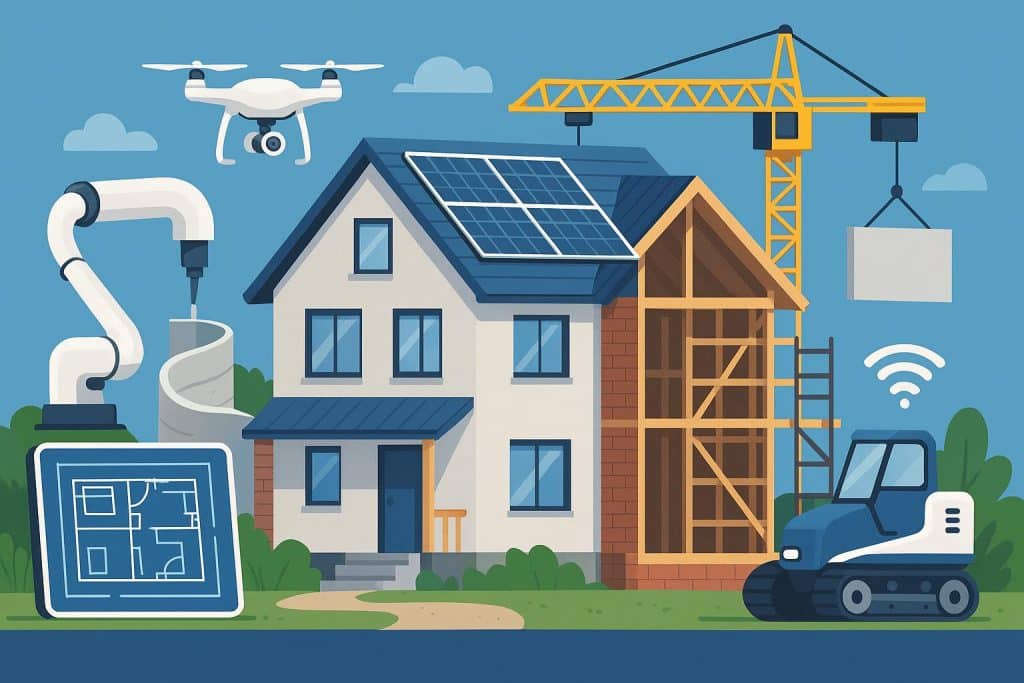The world of home building is changing fast, fusing technology, sustainability, and efficiency in ways unimaginable just a decade ago. From smart gadgets to modular construction techniques, the modern home is no longer simply a place to live but rather an integrated system for convenience, durability, and energy efficiency. Builders and homeowners alike are rethinking every step of the process to build homes that are smarter, faster, and more sustainable.
The Rise of Digital Planning and Design
The first step for any building project involves planning, and modern digital tools have transformed how designs are made. Architects and contractors now heavily rely on 3D modeling software, virtual walkthroughs, and Building Information Modeling (BIM) to visualize projects before laying a single brick. Such tools enhance the level of accuracy and also allow for better collaboration among all stakeholders, reducing costly mistakes and miscommunication.
Virtual reality and augmented reality have become standard for client presentations, allowing homeowners to experience what their living spaces will be like firsthand. Such immersive planning ensures that design decisions are confidently made, while project teams can identify potential challenges related to structure or logistics prior to construction.
Sustainable Materials and Eco-Friendly Solutions
Sustainability has turned out to be one of the cornerstones of modern construction. Along with renewable materials like cross-laminated timber, recycled steel, and eco-friendly insulation, builders are opting for those of low impact. Various green building certifications, such as LEED and ENERGY STAR, define the path for materials and methods of construction that will reduce environmental impact and increase energy efficiency.
Smart building techniques, such as passive solar design and high-performance windows, reduce energy consumption even further. Modern homes integrate solar panels, rainwater harvesting systems, and energy-efficient HVAC units to achieve lower operating costs and a reduced carbon footprint, further appealing to environmentally conscious homeowners.
Smoothing Out Cost and Material Management
Construction projects have long been problematic in keeping within the budget due to delays and cost overruns. Today, modern technology helps overcome these issues with better accuracy in estimating material requirements and labor costs. Using STACK online takeoff software enables builders to manage both material takeoffs and construction estimating in one place. On this cloud platform, contractors can measure plans faster, calculate quantities, and integrate estimates directly into project bids without guesswork or mistakes. Connecting digital takeoffs directly into project management workflows saves time for construction teams by reducing waste and making budgets more predictable and controllable.
Integration of Smart Home Technology
Another major trend in today’s building is the implementation of smart home technologies. Devices like automated lighting, climate control systems, security cameras, and voice-activated assistants are no longer optional; they’re expected. Builders now plan for IoT (Internet of Things) connectivity from the ground up, embedding sensors and smart hubs into the structure itself.
These systems not only improve convenience but also enhance energy efficiency. Smart thermostats adjust temperatures based on occupancy, and automated lighting systems reduce electricity use. The capability for control provided to homeowners in their living environment has never been seen, making daily life safer, more comfortable, and more sustainable.
Modular and Prefabricated Construction
Speed and efficiency are key drivers behind many of today’s construction projects; a factor that contributes to increased modular and prefabricated building. Today, many building components such as walls, floors, and roof sections can be factory-made in ideal conditions and rapidly assembled at the building site. This approach reduces labor costs, shortens construction timelines, and improves quality control.
Furthermore, the prefabrication technique offers more consistent standards, especially for large-scale residential projects. Builders can scale projects more efficiently while maintaining high-quality outcomes, meeting the demands of a fast-paced housing market.
Improved Project Management and Collaboration
Construction projects involve several teams, from architects to engineers, contractors, and subcontractors. Modern construction technology has placed great emphasis on collaboration through centralized project management platforms. These platforms allow all stakeholders to access plans, track progress, and communicate in real time to keep every part of the project aligned.
Advanced project management software also has the capability to predict potential delays, track procurement schedules, and optimize crew deployment. This level of oversight is crucial for minimizing risks, maintaining projects on time, and boosting efficiency in general.
Safety Innovations and Risk Reduction
While safety has always been a focus of construction, technology brings new approaches to mitigating on-site risk. Wearables monitor worker vitals for signs of impending danger and alert supervisors; drones provide aerial site inspections to identify structural weaknesses or unsafe conditions. Predictive analytics powered by AI predict safety risks before they happen to enable proactive intervention.
The combination of real-time monitoring and predictive safety technology offers a safer environment for the workforce by reducing accidents and insurance costs.
Future Trends and Beyond
In the future, home building will become even more automated, intelligent, and sustainable. More robotics could be involved in tasks such as bricklaying and painting; AI-driven design tools will automatically optimize floor plans for efficiency, aesthetics, and energy performance.
With more urban growth and a rise in housing demand, vertical construction and smart city integrations in the future will affect the way houses are constructed and interconnected. Modern technology is not just changing the construction methodologies; it’s redefining what it actually means to live in a home in the 21st century.
Conclusion
From digital design and sustainable materials to smart home technology and efficient project management, modern construction is more advanced and innovative than it has ever been. Both builders and homeowners are benefiting from technology that improves accuracy, reduces waste, and streamlines processes to deliver high-quality homes on time and on budget.

